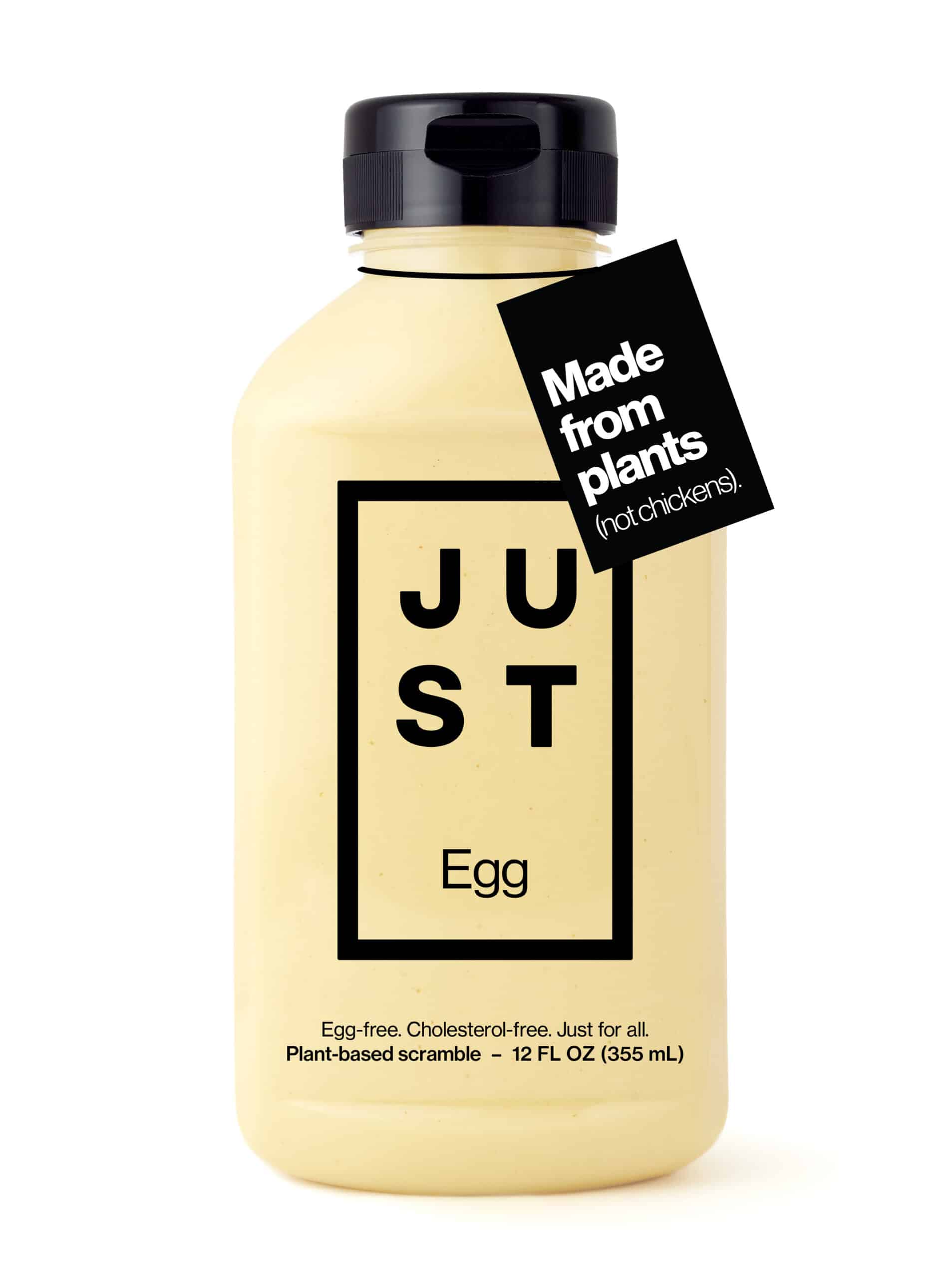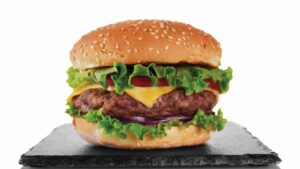With plant-based protein products becoming a bigger commodity every day, European Seed’s sister publication Seed World wanted to get the skinny of how plant-based foods look so much like their meat counterparts.
Plant-based proteins. Just mentioning the idea can stir up a room — immediately, people take sides. Pro meat, neutral or pro plant-based. It’s hard not to have an opinion on them, even though many people haven’t had the chance to taste these proteins.
However, according to the website Plant Based Foods, there’s been a 14.7% growth of plant-based proteins since 2014, and by 2020, the global plant-based protein market is projected to reach $5 billion. While there might be strong opinions about plant-based proteins, there’s also an increasing curiosity amongst the global market.
“In the past years, there’s been a growing global awareness in the U.S. and over the world. People are starting to understand that we live in a finite world and resources matter,” says Udi Lazimy, Senior Sustainability and Sourcing Manager at JUST, a company based in San Francisco, Calif., that has been researching and working with plant-based foods and cultured meat.
“We wanted to look at how to make the food system better, and we think that plant-based solutions offer a path to solve a lot of the problems within our current food system,” he says.
Nick Halla, senior vice president for International of Impossible Foods, the company that created the Impossible Burger, agrees. After growing up on a dairy farm and working at General Mills, Halla sees that our current food system isn’t working.
“From the economic challenges in agriculture and the resource pressure, there’s plenty of problems popping up in our land resources,” Halla says. “The life we grew up with doesn’t exist anymore — instead, we need to change the system and how it’s run.”
Both companies saw different answers to this problem and created two different, unique products.
Impossible Foods saw a huge problem in the fact that animal agriculture occupies almost half the land on Earth and consumes a quarter of our freshwater. Their solution? Let’s not use animals again, and instead, create a copycat beef product made of these plant proteins. And thus, the Impossible Burger was formed.
JUST saw that the food system’s tools were limited, and there were a lot of underused foods that could provide tremendous benefit to them instead of the core ingredients that big food companies use: soy, corn, processed sugar and animal protein. After a lot of exploring, JUST created JUST Egg, a plant-based, protein-packed that cooks up and tastes like real eggs.
“Animal protein isn’t necessary to create really good food,” Lazimy says. “We’re looking to use plant protein to replace things like eggs and dairy, because they aren’t necessary if plants can function the same way. We think it’ll make everything a lot more sustainable.”
In order to produce these products, both companies had to think outside of the box when it came to ingredients.
The Impossible Burger mixes a few different proteins together: soy protein to get the “chew” right, potato protein for the form and texture, and heme, which is found in all meat products, to give it the flavor. To make the Impossible Burgers sizzle like meat, they’ve included sunflower oil to create the fat.
“You have to look at protein production in different leaves and seeds to see what would help mimic the meat look and taste,” Halla says. “We’ve learned that some of these crops are incredibly difficult to grow — that’s why there’s a lot of widescale corn, wheat and sorghum production. They’re so robust.”
“These protein rich seeds are excellent to use — in JUST Egg, we’ve found that when we isolate the mung bean protein in a raw state, it behaves just like an egg protein when you scramble it in a pan,” Lazimy says. “Unlike soy, mung bean has very little evidence of deforestation and it has low water use.”
But the real question we want to know… Are these plant-based proteins considered to be healthier than their meat alter-egos?
“We do believe plant-based products are healthier,” Lazimy says. “There’s a lot of scientific background that shows people have a difficult time digesting red meats. Our egg protein has zero cholesterol, unlike regular egg products. With a plant-based diet, everything can still be healthy and you still get all the nutrition you need, but of course, a balanced diet is most important.”
Impossible Foods hasn’t stopped trying to make the Impossible Burger healthier — in January 2019, they released a new recipe for the burger that cut the sodium 30% from the original recipe, as well as reducing the saturated fat by 40%.
“As we keep thinking of ways to improve the Impossible Burger, nutrition is on the top of our mind,” Halla says. “We’re constantly looking to make it healthier, and that’s what we’re hoping the Impossible Burger version two accomplishes.”
Both companies truly believe that to feed the world’s population by 2050, farmers, seed companies and food companies need to work together to change our food system. For them, plant-based proteins mean the future of agriculture’s value chain.
“Change can be scary,” Halla says. “But there are huge opportunities in the space of plant-based proteins. If we can add more value back into the value chain, then we can have a much more diverse and sustainable world.”
What is Heme?
There are plenty of things that make its way into the Impossible Burger, but the biggest question on everyone’s mind: how does it taste exactly like a beef burger?
The answer: heme.
Heme is the secret ingredient to life on Earth — it’s a molecule full of iron, and it’s actually the molecule that grabs oxygen from your lungs and carries it through your bloodstream. But more importantly, heme makes meat taste like meat. It’s what our body yearns for and craves when you take a bite out of a juicy burger.
“The craving for meat is really a craving for heme and the iron and protein it represents in the diet,” says Pat Brown, founder and CEO at Impossible Foods.
However, heme doesn’t always appear in plants. So how does Impossible Foods create heme inside their plant-based burger? They make plant-based heme by fermentation of genetically engineered yeast.
They started by looking at a lot of different forms of protein, before they identified soy leghemoglobin, which is a protein that contains heme. It can be found in its natural form, in the root modules of natural plants, or it can be created by fermentation, which is much easier to create and maintain in a lab.
“Yeasts are used for making other proteins in certain kinds of beers and wines, so it’s something that people are used to,” says Smita Shankar, principal scientist at Impossible Foods. “The yeast that we use makes its own heme. We take the DNA from soy leghemoglobin, and we insert that DNA into our yeast.”
That DNA from the soy leghemoglobin then helps the yeast make its own heme, which gives the Impossible Burger its impossible flavour.
STATS:
36% of consumers buy plant-based meats, according to Mintel.
The plant-based food sector grew 20% in retail sales, as compared to 2% growth for all foods, according to PBFA-comissioned data from Nielsen.
26% of consumers reported eating less animal meat in the past 12 months, according to Nutrition Business Journal.
The Impossible Burger is found in 70,000 restaurants.
JUST Egg – the better breakfast option
JUST Egg compared to conventional eggs
98% less surface and groundwater1
94% lower carbon footprint2
71% less saturated fat3
100% less cholesterol4
Comparable protein (5g vs 5.35g)5












